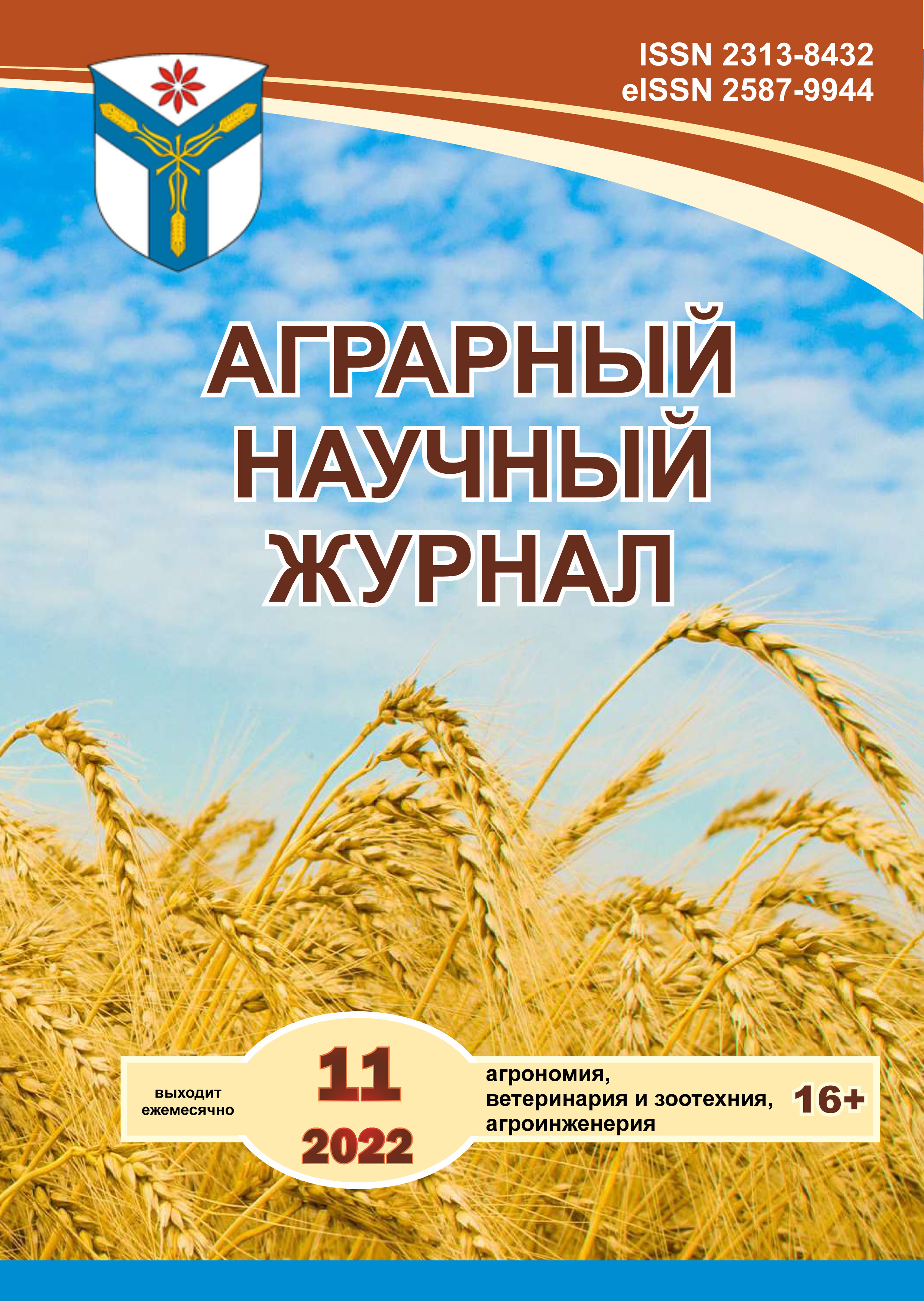The role of growth regulators in the reduction of xenobiotic pesticide exposures in the hybrid tea rose culture
DOI:
https://doi.org/10.28983/asj.y2022i11pp59-63Keywords:
hybrid tea rose, cultivar, Red Naomi, Avalange, Jumilia, phytotoxic-chemical burn, productivity, plant growth regulatorAbstract
Phytotoxic-chemical burn is a very common occurrence in modern agriculture, which leads to a noticeable decrease in the productivity of cultivated plants. The use of growth regulators with immunoprotective functions can neutralize the harmful effects of this phenomenon. Studies conducted on three varieties of hybrid tea roses (Red Naomi, Avalange and Jumilia) showed that growth regulators significantly reduced the xenobiotic effect of those used in the technology of growing cut crops in greenhouses. A higher protective effect against pesticide burn was observed when rose bushes were sprayed with a preparation from the class of brassinosteroids – Epin-extra. In this variant, there was a significant decrease in the manifestation of leaf burn, depending on the variety, by 2.4–3.8 times compared with the control. The protective effect of the drug from the group of poly-beta-hydrooxibutyric acid, Albite, turned out to be somewhat lower. Burn marks in this variant were 1.2–1.5 times less than in the control variant. The least protective effect against chemical burns was observed when rose plants were treated with a preparation of the gibberellin class, Buton II. The treatment of hybrid tea rose bushes with growth regulators in protection against pesticide burns significantly increased the yield of marketable products when cultivated in closed ground. The use of Epin-extra provided the highest yield of marketable shoots on average over four series of experiments for the Avalange variety by 43%, for the Jumilia variety by 46%, and for the Red Naomi variety by 44% compared to the control. Among the varieties studied, Avalange proved to be more resistant to chemical burn and the most productive in all climatic seasons of the year. In descending order of the productivity of a hybrid tea rose, the seasonal periods can be arranged as follows: summer-spring-autumn-winter.
Downloads
References
Азиева И. А., Боровой Е. П. Технология выращивания роз в теплице // Интеграция науки и производства: материалы Междунар. науч.-практ. конф. Волгоград, 2013. С. 193–196.
Афанасова Е. А., Ненашев В. П. Агробиологическая оценка сортов чайно-гибридных роз в условиях города Краснодара // Вестник научно-технического творчества молодежи Кубанского ГАУ. Краснодар, 2016. С. 11–13.
Березкина И. В., Комиссаров В. А. Определение показателей фотосинтетической деятельности розы // Известия Тимирязевской сельскохозяйственной академии. 1988. № 1. С. 180–185.
Бударин А. А., Клемешова К. В. Чайно-гибридные розы в коллекции Всероссийского научно-исследовательского института цветоводства и субтропических культур // Субтропическое и декоративное садоводство. 2019. № 68. С. 31–38.
Еськов И. Д., Губайдулина Ф. Г., Теняева О. Л. Химический контроль численности западного цветочного трипса (Frankliniella Occidentalis Pergande) на чайно-гибридных розах в теплицах // Аграрный научный журнал. 2016. № 4. С. 7–10.
Использование сортов чайно-гибридных роз коллекции Никитского ботанического сада в цветоводстве южного берега Крыма / З. К. Клименко [и др.] // Биология растений и садоводство: теория, инновации. 2020. № 1-154. С. 65–77.
Павлюк Н. А., Березовская О. Л. Способы борьбы с инфекционным ожогом роз // Защита и карантин растений. 2019. № 12. С. 40–41.
Потапова Н. В., Кузнецов А. В., Плешаков Д. Н. Иммуномодулирующая роль регуляторов роста растений в борьбе с мучнистой росой розы // Ресурсосберегающие экологически безопасные технологии производства и переработки сельскохозяйственной продукции: материалы XV Междунар. науч.-практ. конф., посвящ. памяти профессора С.А. Лапшина. Саранск: Изд-во Мордов. ун-та, 2019. С. 221–225.
Смолин Н. В., Плешаков Д. Н. Применение регуляторов роста в борьбе с мучнистой росой в технологии выращивания розы на гидропонике // Инновационные технологии производства и переработки сельскохозяйственной продукции: материалы. Междунар. науч.-практ. конф. Владикавказ: Изд-во Горского ГАУ, 2012. С. 203–204.
Влияние предпосевной обработки семян регуляторами роста и фунгицидами на полевую всхожесть Zinnia Elegans / Н. В. Смолин [и др.] // Аграрный научный журнал. 2020. № 5. С. 44–49.
Стрюкова Н. М., Богаченок И. А. Защита декоративных сортов розы от вредителей в открытом и защищенном грунте // Научные труды ЮФ НУБиП Украины «КАТУ». 2012. № 148. С. 175–182.
Усова К. А., Белопухов С. Л., Шайхиев И. Г. Экологически безопасные высокоэффективные регуляторы роста растений для цветочно-декоративных культур (обзор российской литературы) // Вестник технологического университета. 2016. Т. 19. № 21. С. 193–198.
Downloads
Published
Issue
Section
License
Copyright (c) 2022 The Agrarian Scientific Journal

This work is licensed under a Creative Commons Attribution-NonCommercial-NoDerivatives 4.0 International License.








